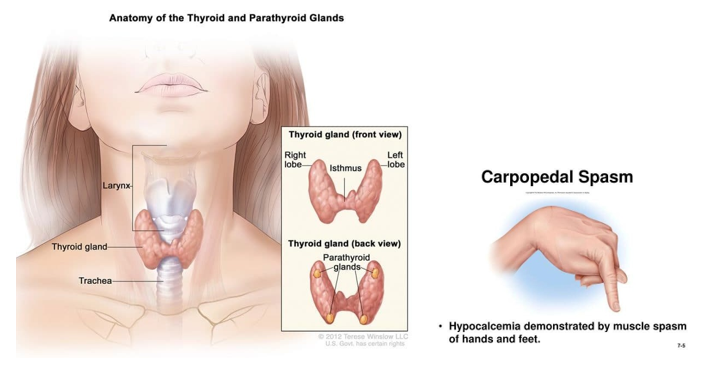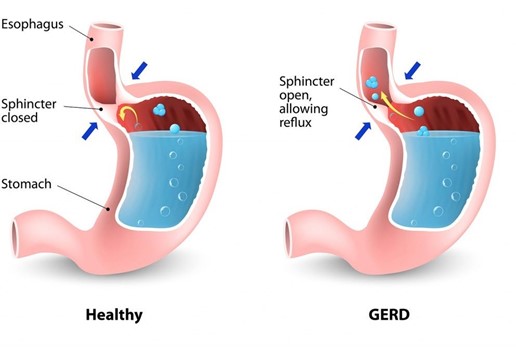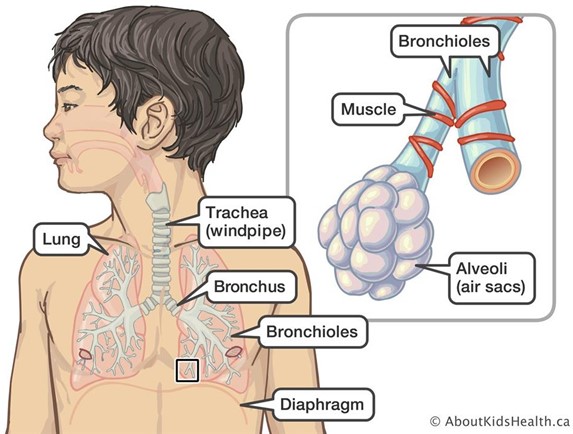The nurse is caring for a child with hypoparathyroidism who demonstrates a carpal spasm when pressure is applied to the upper arm. Which laboratory value should the nurse review?
Potassium.
Chloride.
Sodium.
Calcium.
The Correct Answer is D
Hypoparathyroidism is a disorder in which the parathyroid glands produce insufficient amounts of parathyroid hormone, which regulates calcium and phosphorus levels in the body. In hypoparathyroidism, there is a decreased level of calcium in the blood, which can result in carpal spasm or tetany when pressure is applied to the upper arm.
Therefore, the nurse should review the child's calcium level (D) to determine if it is within the normal range. Low calcium levels can cause muscle spasms, seizures, and cardiac arrhythmias. Hypocalcemia may also result in other symptoms such as numbness, tingling, and muscle cramps.
Potassium (A), chloride (B), and sodium (C) are electrolytes that play important roles in various physiological processes in the body, but they are not directly related to the development of carpal spasm in a child with hypoparathyroidism. While hypokalemia (low potassium) or hyponatremia (low sodium) can cause muscle weakness or cramps, these conditions are not typically associated with carpal spasm in hypoparathyroidism.

Nursing Test Bank
Naxlex Comprehensive Predictor Exams
Related Questions
Correct Answer is A
Explanation
The child with gastroesophageal reflux should avoid acidic and spicy foods, as well as high-fat and high- sugar foods. Sugar cookies are a low-fat and low-sugar snack, which indicates that the child understands the dietary restrictions. Choices B, C, and D are high in fat, sugar, or acid and may exacerbate gastroesophageal reflux symptoms.

Correct Answer is A
Explanation
Flaring of the nares is a sign of increased respiratory effort, which is a manifestation of acute respiratory distress. This finding occurs when the child is attempting to draw in more air to meet the increased demand for oxygen.
Bilateral bronchial breath sounds can indicate consolidation or a bronchial obstruction, but they are not specific to acute respiratory distress.
Diaphragmatic respirations are a normal finding and may occur in response to respiratory distress, but they do not necessarily indicate acute respiratory distress.
A resting respiratory rate of 35 breaths/min is within the normal range for a 1-year-old child and does not necessarily indicate acute respiratory distress.

Whether you are a student looking to ace your exams or a practicing nurse seeking to enhance your expertise , our nursing education contents will empower you with the confidence and competence to make a difference in the lives of patients and become a respected leader in the healthcare field.
Visit Naxlex, invest in your future and unlock endless possibilities with our unparalleled nursing education contents today
Report Wrong Answer on the Current Question
Do you disagree with the answer? If yes, what is your expected answer? Explain.
Kindly be descriptive with the issue you are facing.
